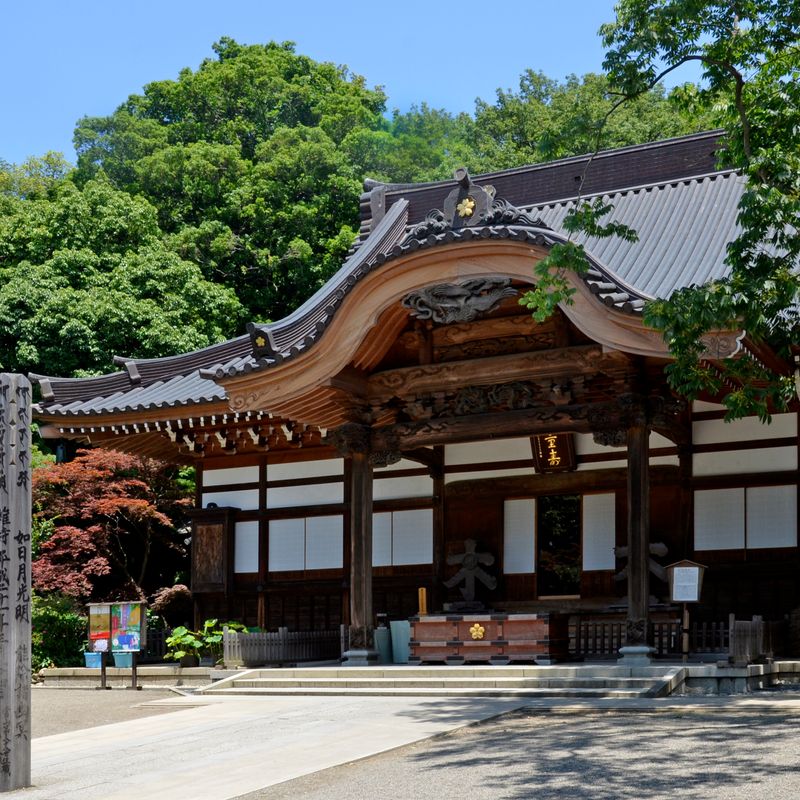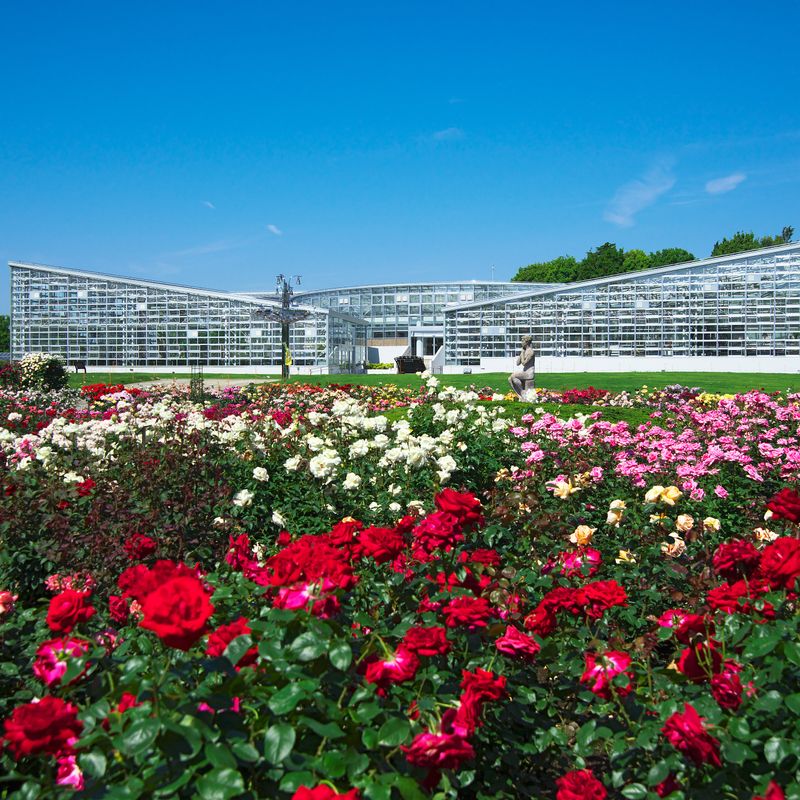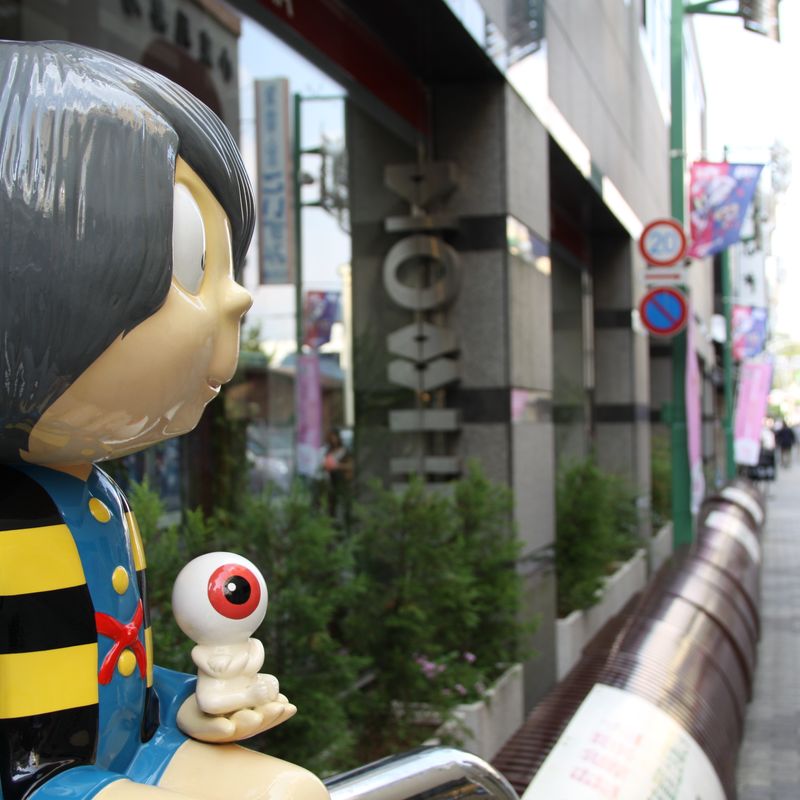Essential Experiences
Jindaiji’s water, greenery and soba

A symbol of Chofu City, the ancient Buddhist temple of Jindaiji is regarded as one of the finest of its kind in the Kanto region of Japan. Surrounded by lush greenery fed by natural spring waters Jindaiji and its grounds may only be short hop from the hustle and bustle of Tokyo centers like Shinjuku but the atmosphere is a world away.
It’s this abundant nature that welcomes visitors to Jindaiji Temple, putting on a show whatever the season, from the cherry blossoms of spring, through fireflies in summer, to the blaze of autumn leaves during fall. In winter, visitors keep seasonal chills at bay during a festival celebrating the famous buckwheat soba noodles made and sold in shops around the temple.
Befitting a temple that dates back to 733 the grounds of Jindaiji guard ancient treasures that await discovery by visitors.
Among these treasures, the statue of Hakuhoh Buddha -- a seated Buddha dating back over 1300 years -- is the oldest of its kind in Eastern Japan. Hakuhoh Buddha was designated a National Treasure in 2017.
The superlatives at Jindaiji continue with the temple’s old bell, cast in 1376, being the third oldest surviving bell in the Tokyo area. Retired in 2001, the old bell now spends its days in the temple’s Shaka Hall, where the Hakuhoh Buddha is enshrined.
The name Jindaiji is derived from “Jinja Daioh,” the god of water. Legend has it that this same god came to the aid of would-be star-crossed lovers enabling them to marry. The couple gave birth to a child who went on to establish a temple in which to enshrine the god of water, today’s Jindaiji. Legend persists and today Jindaiji is known as something of a matchmaker!
A number of events throughout the year see Jindaiji break out into festive mood.
The Jindaiji Daruma Fair (Yakuyoke-Ganzandaishi Taisai) sees the temple grounds ablaze with the brilliant vermillion of Japan’s talismans of good luck, the daruma. Some 300 stalls set up shop during the fair to create one of the three largest daruma doll markets in Japan. The fair is held in honor of the monk Ganzandaishi, who some believe guards against bad luck (Ganzandaishi is said to be the creator of Japan’s popular omikuji fortunes).
During a visit to Jindaiji be sure to rest up and fill the stomach up at one many eateries around the temple specializing in the famous Jindaiji soba noodles.
A 2-km walking course from Chofu Station takes in a number of Chofu City’s attractions on the way to Jindaiji Temple. Otherwise buses marked ‘cho 34’ (調34) depart stop No. 14 outside the Hiroba Exit of Chofu Station for the 15-min journey to Jindaiji.
Bask in nature at Jindai Botanical Gardens

Jindai Botanical Gardens spreads its impressive collection of trees, plants and flowers across a near 490,000-sq. meter site northwest of Jindaiji Temple, offering something to delight visitors whatever the season.
The scale of Jindai Botanical Gardens is impressive with some 100,000 plants and trees, covering around 4,800 species, grown here in gardens that are said to echo the Musashino region of days gone by.
Despite the scale however, navigation of the area is made easy and informative.
The Main Garden is divided into 30 blocks according to plant species. Here, visitors are drawn to the Rose Garden, the main garden of which is designed in a sunken style and centers around a fountain. Over 5,200 spring roses, covering over 400 varieties, reach their peak bloom here in late May. Later in the year, over 5,000 autumn roses (around 300 varieties) reach their peak in mid-October.
Just after passing through the main entrance of Jindai Botanical Gardens visitors are welcomed by one of the park’s symbols -- the Azalea Garden where 110 varieties of the flowering plant (numbering around 12,000) decorate the banks of the park’s pond in spring.
Earlier in the year visitors to Jindai Botanical Gardens can enjoy the Plum Garden where over 70 varieties of plum trees break into blossom from late January to late March. Hot on their trail are the park’s 750 cherry trees which wow with a riot of around 60 kinds of sakura.
Things get a little wilder in Jindai Botanical Gardens’ Grove where visitors can wander through a forest of oaks, red cedars and more. Across from the Main Garden the water flowing around Jindaiji Temple has lead to the creation of marshland that has been developed into the Aquatic Plant Garden. Here, wooden walkways navigate the waters to guide visitors around an area of reeds, primrose, iris and plenty more.
For a taste of the tropics at any time of year head to the large greenhouse, which reopened in 2016 after renovations and now houses a collection of around 1300 varieties of rare tropical plants and colorful flowers.
If it all gets too much make for the Lawn Square to spread out with a picnic in the center of the gardens and listen to the breeze flow through a collection of pampas grass.
Jindai Botanical Gardens opened in 1961, at that time as the only botanical garden in Tokyo. Prior to WWII the site was a nursery for raising trees to be planted along the capital’s streets.
Aside from wowing visitors with the flora Jindai Botanical Gardens is an important resource, promoting the preservation of plant species through events and exhibitions and generating awareness about the importance of green spaces in urban areas.
Facilities at Jindai Botanical Gardens include The Center for Plant Diversity which communicates to visitors the importance of preserving plant diversity. The people at the center also work to establish networks with other botanical gardens, universities and conservation groups.
Other facilities include a dog run, shops and a cafe.
The Main Garden and The Center for Plant Diversity are open from 9:30 - 17:00. The Aquatic Plant Garden from 9:30 - 16:30.
Entrance to the Main Garden: 500 yen (adult), 250 yen (seniors (65 and over)), 200 yen (jr high student)
From bus stop Chofu Station North Exit (stop No. 13) buses bound for Kichijoji or Mitaka stations stop at Jindai Shokubutsu Koen Mae (for the gardens).
Mizuki Manga’s birthplace

©Mizuki Productions
There are few adults in Japan who won’t have heard of the manga artist Shigeru Mizuki, and there are likely even fewer who have yet to read, see or play some form of Mizuki’s most celebrated work, “GeGeGe no Kitaro.”
Mizuki established his legend, and that of the characters he created, here in the city of Chofu, ”Mizuki Manga’s birthplace”.
From Chofu, Mizuki’s influence and works as a mangaka (cartoonist or manga artist) have gone on to be felt and enjoyed around the world (Mizuki is one of only three Japanese manga artists to be awarded the Heritage Award at the Angouleme International Comic Festival, one of Europe’s largest, for his 1973 manga, “Soin Gyokusai Seyo” (Onward Towards Our Noble Deaths)).
A visit to Chofu then is an essential experience for fans of the genre, and a chance to connect with one of its masters.
Mizuki settled into life as an artist in Chofu City after just about surviving WWII (during which he lost his left arm while serving on the island of New Britain in Papua New Guinea), and began producing his celebrated and award-winning works of manga, “GeGeGe no Kitaro” among them.
Just as GeGeGe no Kitaro’s central character, the one-eyed yokai boy Kitaro, sought to unite the world of humans with that of the yokai -- spirits and monsters from Japanese folklore -- so too Chofu unites characters from Mizuki’s manga with visitors to the city.
Dotted throughout the city tributes to Mizuki, through Kitaro and his yokai friends, await discovery. The fun starts as soon as travelers come out of the North Exit of Chofu Station (pay close attention to one of the bicycle parking areas) and continues along Tenjin-dori Street (keep the eyes peeled for special manhole covers and statues as you head towards Fudatenjin Shrine). Or how about a ride on one of Chofu City’s mini buses, nicknamed “Kitaro buses” after the artwork decorating their exterior?
Such is the extent of the tributes to, and celebration of, Mizuki and his works in Chofu, that in 2017 the city was selected as one of the anime-related locations on the “2018 Japanese Anime Tourism 88-Stop Pilgrimage,” in recognition of Chofu as the city where Mizuki manga was born -- “Mizuki Manga’s birthplace.”
Scenes from the 2010 NHK drama “GeGeGe no Nyobo” were filmed in Chofu, around Jindaiji Temple. The drama was based on a novel penned by Mizuki’s wife, Nunoe Mura, and detailed her life as Mizuki’s wife.
Mizuki lived in Chofu for more than 50 years, becoming an honorary citizen of the city in 2008. Since his passing on November 30, 2015 (aged 93), the day has been known by residents here as “GeGeGe Ki” and is marked with events in the city giving residents and visitors the chance to remember and connect with the manga master and his beloved characters once more.
